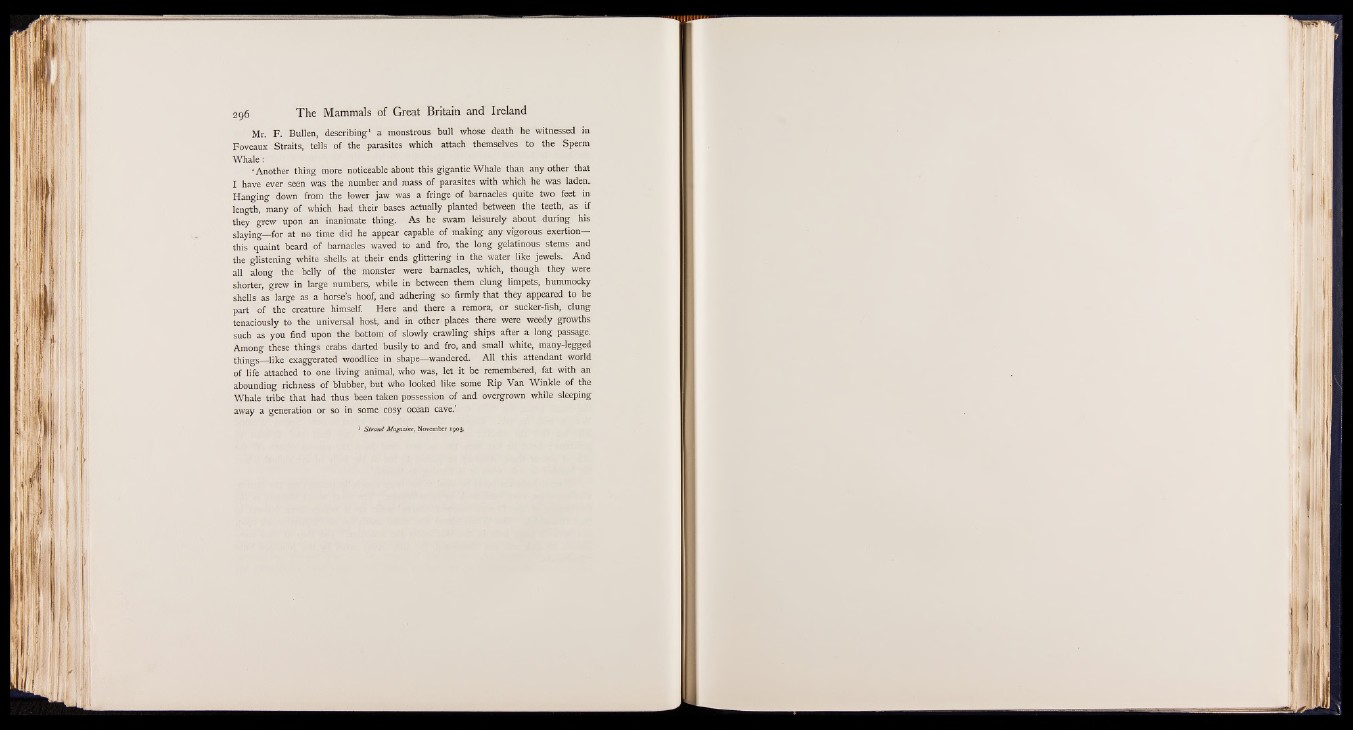
296 The Mammals of Great Britain and Ireland
Mr. F. Bullen, describing1 a monstrous bull whose death he witnessed in
Foveaux Straits, tells of the parasites which attach themselves to the Sperm
Whale:
‘ Another thing more noticeable about this gigantic Whale than any other that
I have ever seen was the number and mass of parasites with which he was laden.
Hanging down from the lower jaw was a fringe of barnacles quite two feet in
length, many of which had their bases actually planted between the teeth, as if
they grew upon an inanimate thing. As he swam leisurely about during hist
slaying— for at no time did he appear capable of making any vigorous-exertion—
thi>l quaint beard of barnacles waved to and fro, the long gelatinous stems and
the glistening white shells at their ends glittering in the water like jewels. And
all along the belly of the monster were barnacles, which, though they were
shorter, grew in large numbers, while in between them clung limpets, hummocky
shells as large as a horse’s hoof, and adhering so firmly that they appeared to be
part of the creature himself. Here and there a remora, or sucker-fish, clung
tenaciously to the universal host, and in other places there were weedy growths
such as you find upon the bottom of slowly crawling ships after a long passage.
Among these things crabs darted busily to and fro, and small white, many-legged
things— like exaggerated woodlice in shape— wandered. All this attendant world
of life attached to one living animal, who was, let it be remembered, fat with an
abounding richness of blubber, but who looked like some Rip Van Winkle of the
Whale tribe that had thus been taken possession of and overgrown while sleeping
away a generation or so in some cosy ocean cave.’
Strand Magazine, November 1903.